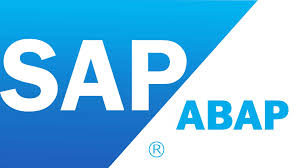 21. What is DynPro?
21. What is DynPro?
DynPro is a Dynamic Programming which is a combination of screen and the associated flow logic Screen is also called as DynPro.
22. What are screen painter and menu painter?
Screen painter: Screen painter is a tool to design and maintain screen and its elements. It allows user to create GUI screens for the transactions. Attributes, layout, filed attributes and flow logic are the elements of Screen painter. Menu painter: Menu painter is a tool to design the interface components. Status, menu bars, menu lists, F-key settings, functions and titles are the components of Menu painters. Screen painter and menu painter both are the graphical interface of an ABAP/4 applications.
23. What are the components of SAP scripts?
SAP scripts is a word processing tool of SAP which has the following components: Standard text. It is like a standard normal documents. Layout sets. – Layout set consists of the following components: Windows and pages, Paragraph formats, Character formats. Creating forms in the R/3 system. Every layout set consists of Header, paragraph, and character string. ABAP/4 program.
24. What is ALV programming in ABAP? When is this grid used in ABAP?
ALV is Application List viewer. Sap provides a set of ALV (ABAP LIST VIEWER) function modules which can be put into use to embellish the output of a report. This set of ALV functions is used to enhance the readability and functionality of any report output. Cases arise in sap when the output of a report contains columns extending more than 255 characters in length. In such cases, this set of ALV functions can help choose selected columns and arrange the different columns from a report output and also save different variants for report display. This is a very efficient tool for dynamically sorting and arranging the columns from a report output. The report output can contain up to 90 columns in the display with the wide array of display options.
25.What is the difference between collect and sum?
SUM:
When processing an internal table in a block starting with LOOP and concluded by ENDLOOP , SUM calculates the control totals of all fields of type I , F and P (see also ABAP/4 number types ) and places them in the LOOP output area (header line of the internal table or an explicitly specified work area).
When you use SUM in a LOOP with an explicitly specified output area, this output area must be compatible with the line type of the internal table.When using LOOP to process a sorted extract (see SORT ), the control total of f at the end of the group appears in the field SUM(f) – – if f is type I , F or P .
COLLECT:
COLLECT is used to create unique or compressed datsets. The key fields are the default key fields of the internal table itab .
If you use only COLLECT to fill an internal table, COLLECT makes sure that the internal table does not contain two entries with the same default key fields.
If, besides its default key fields, the internal table contains number fields,the contents of these number fields are added together if the internal table already contains an entry with the same key fields.
If the default key of an internal table processed with COLLECT is blank, all the values are added up in the first table line.
If you specify wa INTO , the entry to be processed is taken from the explicitly specified work area wa . If not, it comes from the header line of the internal table itab .
After COLLECT , the system field SY-TABIX contains the index of the – existing or new – table entry with default key fields which match those of the entry to be processed.
COLLECT can create unique or compressed datasets and should be used precisely for this purpose. If uniqueness or compression are unimportant, or two values with identical default key field values could not possibly occur in your particular task, you should use APPEND instead. However, for a unique or compressed dataset which is also efficient, COLLECT is the statement to use.
If you process a table with COLLECT , you should also use COLLECT to fill it. Only by doing this can you guarantee that the internal table will actually be unique or compressed, as described above and COLLECT will run very efficiently.
If you use COLLECT with an explicitly specified work area, it must be compatible with the line type of the internal table.
26.How we format the data before before write statement in report ?
We can format the reports output by using the loop events like:
1.at first
2.at new
3.at last
etc check docu
27. What is the difference between Table and Template?
table is a dynamic and template is a static
28. When do we use End-of-selection?
End-of-selection event are mostly used when we are writing HR-ABAP code. In the HR-ABAP code, data is retrived in the Start-of-selection event and Printing on the list and all will be done in End-of-selection event.
29. What is the differences between ABAP and OOABAP. In which situation we use OOABAP?
OOABAP is used to develop BSP/PCUI applications and also anthing involved object oriented like BADIs, SmartForms..etc.where as ABAP is used to develop traditional programs in R/3.
30. What is table buffer? Which type of tables used this buffer?
buffer is nothing but a memory area. table is buffered means that table information is available on application server. when you call data from database table it will come from application server.
transperent and pooled tables are buffered. cluster tables can not buffered